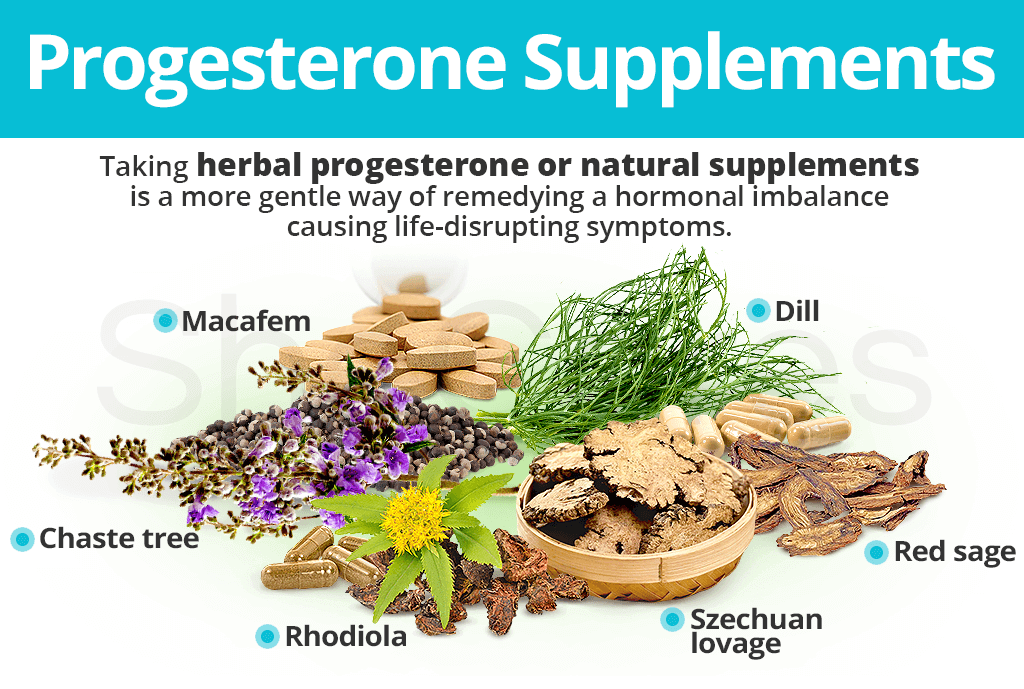There are a variety of herbal progesterone supplements available for women searching to amend its imbalance. While it may be true that HRT, bioidentical hormones, and other pharmaceutical options often reap quick results, they are considered riskier as their side effects can be life-threatening.
Continue reading to learn more about progesterone supplements as a less invasive and more natural option to finally achieve overall hormonal well-being for a symptom-free life.
Herbal Progesterone Options
Herbal progesterone supplements have varying mechanisms of action to ultimately assist with overall progesterone production. They include:
Chaste tree (Vitex agnus-castus). Studies have verified chaste tree's positive effect on improving progesterone synthesis during the luteal phase, second half of the menstrual cycle.1,2
Red sage (Radix Salvia miltiorrhizae). Traditional Chinese medicine (TCM) promotes the use of this anti-inflammatory herb to treat corpus luteum defect by promoting blood circulation to the reproductive organs.3,4
Rhodiola (Rhodiola rosea). Though not a traditional herbal progesterone option, rhodiola can ultimately encourage healthy progesterone levels by decreasing levels of cortisol. When the body is under extreme stress, cortisol is made from progesterone.
Dill (Anethum graveolens L.). A common kitchen herb, dill has been used traditionally to increase breast milk production and promote healthy menstruation. However, it's also been scientifically found to increase plasma progesterone concentrations.5
Szechuan lovage (Ligusticum wallichii). This TCM has been used throughout the centuries to positively support the female reproductive system by raising low estrogen and progesterone production in addition to remedying other menstrual maladies.
Also, herbal progesterone options can include natural supplements such as:
Macafem. Macafem is an all-natural supplement that contains Lepidium meyenii, an endocrine-stimulating herb also known as Peruvian ginseng. It stimulates the thyroid and pituitary glands to produce more of their own hormones more effectively, thus resolving a progesterone imbalance.
Conclusions
Herbal progesterone options should be thoroughly discussed with a certified herbalist or naturopath before treatment. When used properly, taking a progesterone supplement makes it possible for women to treat a progesterone imbalance in the long-term. Moreover, by complementing aforementioned options with lifestyle and dietary changes, women will be setting themselves up to living a better quality of life far into a their post-fertility years.
Sources
- Arnold-Pirtle, M. (2018). Ancient Healing for Modern People: Food, Herbs & Essential Oils to Detox, Cleanse & Rejuvenate the Body, Mind & Soul. USA: Total Health Acupuncture Center. Available from Google Books.
- Braun, L. & Cohen, M. (2019). Herbs and Natural Supplements: An Evidence-Based Guide, 3rd Edition. Australia: Elsevier. Available from Google Books.
- Briden, L. (2015). Period Repair Manual. California: Author.
- Colbert, D. (2008). Stress Less. Florida: Siloam. Available from Google Books.
- Conrad, C. (2005). A Woman's Guide to Natural Hormones. New York: The Berkley Publishing Group. Available from Google Books.
Footnotes:
- Roemheld-Hamm, B. (2005). Chasteberry. American Family Physician, 72(5), 821-824. Retrieved December 13, 2019, from https://www.aafp.org/afp/2005/0901/p821.html
- Romm, A. (2009). Chapter 13 - Pregnancy: First Trimester. Botanical Medicine for Women's Health, 347-361. doi: 10.1016/B978-0-443-07277-2.00015-5
- Teng, B. et al. (2017). Successful Pregnancy after Treatment with Chinese Herbal Medicine in a 43-Year-Old Woman with Diminished Ovarian Reserve and Multiple Uterus Fibrosis: A Case Report. Medicines (Basel), 4(1), 7. doi: 10.3390/medicines4010007
- Maciocia, G. (2011). Obstetrics and Gynecology in Chinese Medicine, 2nd Edition. China: Elsevier. Available from Google Books.
- Malihezaman, M. et al. (2012). Anti-Fertility Effects of Different Fractions of Anethum Graveolens L. Extracts on Female Rats. African Journal of Traditional, Complementary and Alternative Medicines, 9(3), 336-341. doi: 10.4314/ajtcam.v9i3.6
